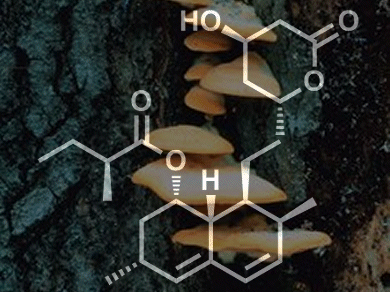Fungi are useful organisms in biotechnology as they are able to synthesize unique and complex molecules, which are often used as drugs in medicine. The most popular example is probably the antibiotic penicillin. Another example is the naturally occurring drug lovastatin. This molecule helps to lower the cholesterol content in the blood to reduce the risk of cardiovascular diseases.
To improve the synthesis of lovastatin in Aspergillus terreus for drug production, Marcin Bizukojc, Lodz University of Technology, Lodz, Poland, and colleagues analyzed the impact of talc microparticles in the culture on the morphology of fungal pellets. Changes in morphology are often used to optimize a process to increase the production of a desired metabolite.
The addition of talc microparticles lead to an average decrease in the diameter of the pellets from 2000 to 900 μm, which facilitated diffusion of oxygen into the pellet. The critical pellet diameter for full oxygen penetration was found to be 1700 μm. The less dense structure of the smaller pellets also makes the lactose utilization of Aspergillus terreus more efficient, which leads to increased production of lovastatin. The highest lovastatin titer was found at 12 g microparticles per liter, whereas smaller pellets were already found at 1 g/L in the preculture.
- Adding talc microparticles to Aspergillus terreus ATCC 20542 preculture decreases fungal pellet size and improves lovastatin production,
Joanna Gonciarz, Marcin Bizukojc,
Eng. Life Sci. 2013.
DOI: 10.1002/elsc.201300055




